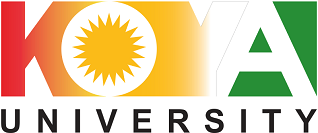The Impact of Intermittent Training on Neuromuscular Coordination and the Ability of Table Tennis Players
to Execute the Front and Back Straight Spiral Strokes
DOI:
https://doi.org/10.14500/kujhss.v8n2y2025.pp438-445Keywords:
Table Tennis, Forehand Curls, ackhand Curls, Neuromuscular Coordination, Cessation Of TrainingAbstract
In order to develop indicators and objective evidence of the effects resulting from stopping training, as well as to understand the relationship between training cessation and neuromuscular coordination and the forward and backhand spiral skills of table tennis players, it is important to have a clear understanding of the effects of stopping and restarting training. The association between halting and continuing training with the unique neuromuscular coordination (eye-hand) and (leg) of female table tennis players, as well as the forward and back spiral talents of these players, is revealed. Because of its applicability and the nature of the research, the researchers employed the descriptive approach. The study sample consisted of seven players, or 77.77% of the research population of nine players, and the research sample was removed. The research population comprised players from the Iraqi table tennis squad for the 2022–2023 sports season. (2) Participants in the reconnaissance experiment. To determine the validity of the tests and measurements employed and their applicability to the level of the study sample, the researchers carried out a reconnaissance experiment. After that, they taught the supporting work team on them. The three levels' tests and measurements were then carried out using statistical techniques (SPSS). The three main findings are that the research subject experienced a non-significant decline in their forward and backward spiral strike skills, a significant decline in their neuromuscular coordination, and a significant decline in their forward and backward spiral strike skills after a four-week training break.
Downloads
References
التكريتي ، وديع ياسين والحجار، ياسين طه (1986): الإعداد البدني للنساء ، دار الكتب للطباعة والنشر ، جامعة الموصل .
حسانين، محمد صبحي(1995): القياس والتقويم في التربية البدنية والرياضية، ط3، جـ1، دار الفكر العربي، القاهرة.
الحسو، عبد الجبار عبد الرزاق (2001): أثر التوقف عن التدريب على مستوى الأداء المهاري لدى لاعبي الجمناستك على جهاز الحلق، مجلة الرافدين للعلوم الرياضية، المجلد (7)، العدد (22).
سلامة، بهاء الدين (1989): فيسولوجية الرياضة، دار الفكر العربي، القاهرة.
صبري ، أثير والكاتب ، عقيل رشيد (1998) التدريب الدائري الحديث، مطبعة علاء، بغداد.
عباس، إيمان نجم الدين وآخرين (2018): تنس الطاولة اختبارات المهارات الهجومية والدفاعية، ط1، مكتبة المجتمع العربي للنشر والتوزيع، عمان.
عبد الفتاح، أبو العلا أحمد (1997): التدريب الرياضي الأسس الفسيولوجية، ط1، دار الفكر العربي، القاهرة.
عبد الفتاح، أبو العلا أحمد وسيد، أحمد نصر الدين (2003): فسيولوجيا اللياقة البدنية ، ط2، دار الفكر العربي، القاهرة.
العبيدي، أحمد صباح (2005): أثر التدريب باستخدام أثقال إضافية في عدد من عناصر اللياقة البدنية والحركية الخاصة للاعبي المبارزة بسلاح الشيش، رسالة ماجستير غير منشورة ، جامعة الموصل ، كلية التربية الرياضية.
مجمع اللغة العربية (1984): معجم علم النفس والتربية، ط1، القاهرة، الهيئة العامة لشئون المطابع الأميرية.
المندلاوى، قاسم حسن وآخرون (1989): الاختبار والقياس والتقويم في التربية الرياضية، الموصل، مطبعة التعليم العالي.
ملحم، عثمان فاضل (1999): الطب الرياضي وفسيولوجي، دار الكندي للنشر والتوزيع الاردن.
Brain mackenzi (1999) sport coach-plymetricy Disclamier, BBC Education. Web Giude (sport) http/www. Brainmac 7.3
Clayne ,R . 8 Gordon ,W . (1986) : Applied Kinesioloiy and Bio mechanios , Macraw – Hill Book co . New york
Fox, E.L & Mathews, D. K (1981) The physiological basis of physical education and athletics 3rd ed, W.B. Saunders Co, philadlphia.
Mcardle. W & et al (1981) Exercise physiology, energy, Nutreation and human performance lea and Febiger.
Strauss, R. H(1979) sport medicine and physiology W.B saunders.
Thorstensson, A., et al (1975) Enzyme Activities and muscle strength after sprint training in man. Actaphysiol. Scand.
Downloads
Published
How to Cite
Issue
Section
License
Copyright (c) 2025 Rizgar M. Khudhur, nasir M. Ibrahem, Taha Q. Omer

This work is licensed under a Creative Commons Attribution-NonCommercial-NoDerivatives 4.0 International License.







